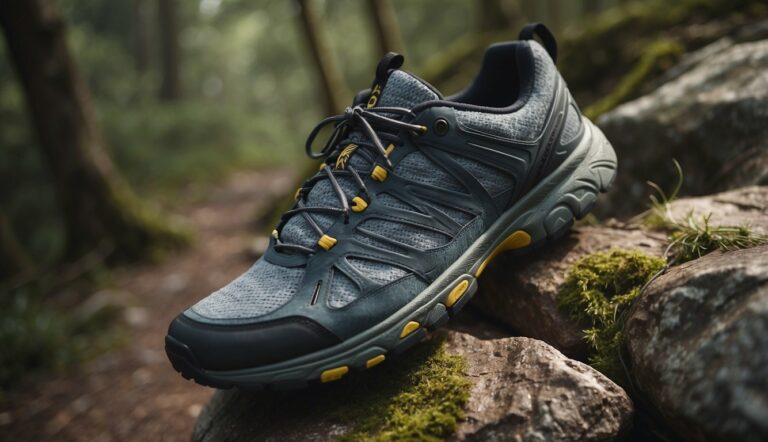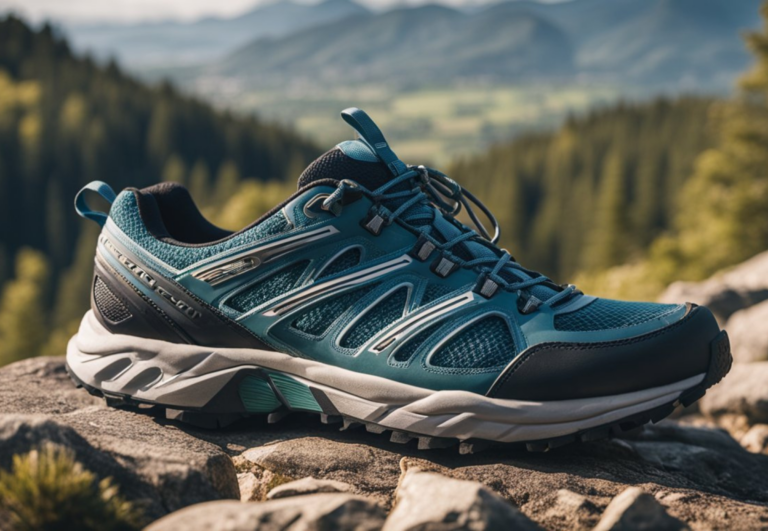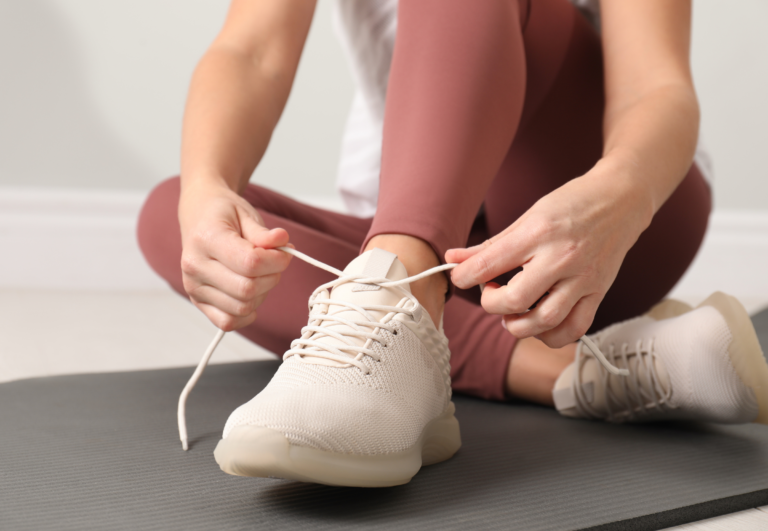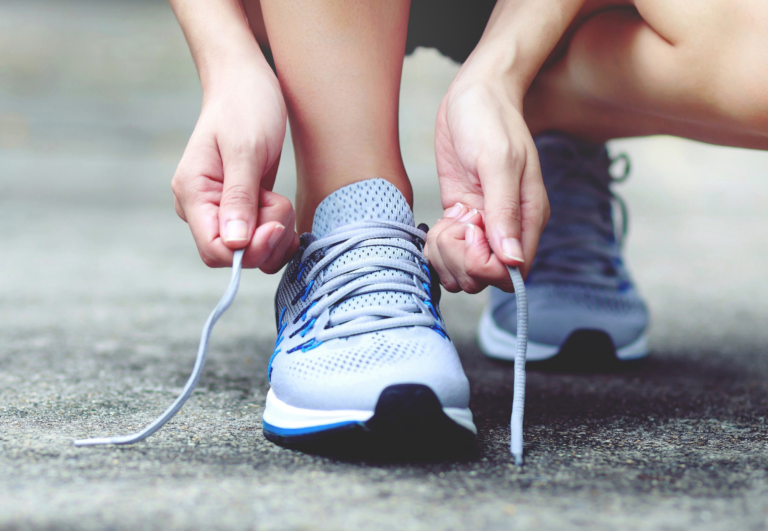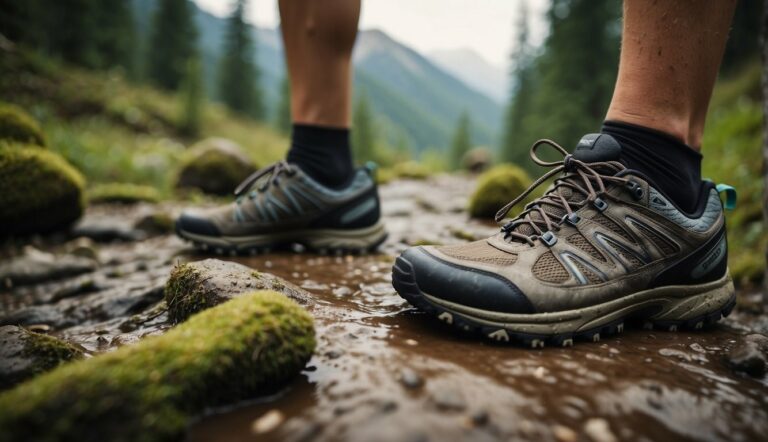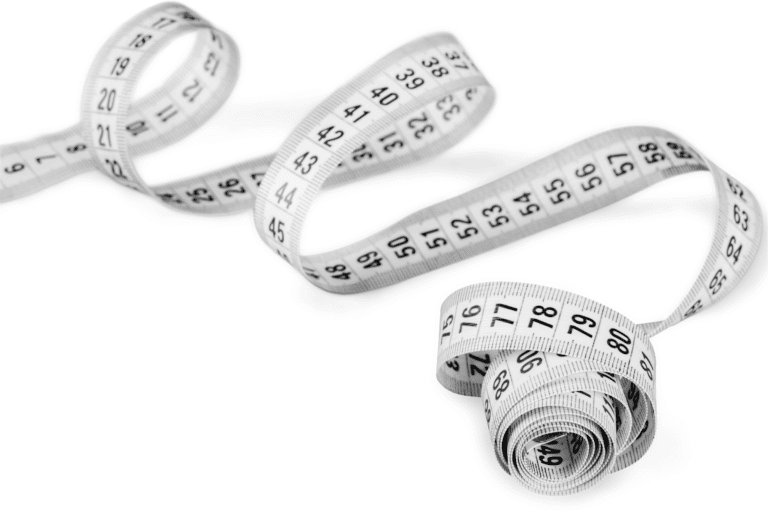How to Choose Running Shoes for Flat Feet or Low Arches (With Recommendations!)
Choosing the right running shoes, like athletic trainers or sneakers designed specifically for flat feet or low arches, is crucial for comfort and injury prevention. When deciding, give special consideration to the fit, size, weight, and especially the support of the upper and forefoot to protect your knees. Flat-footed runners tend to overpronate, which means their feet roll inward too much when walking or running, leading to potential discomfort and injuries.
To mitigate these risks, it’s essential to select shoes with stability features, such as a firm midsole or medial post, to support the flat feet or low arch and control motion. Additionally, custom orthotics or insoles can provide tailored support and further enhance comfort. Understanding your foot type through simple tests, like the wet test, can guide you in finding the perfect pair of running shoes designed to cater to flat feet or low arches, ensuring a healthy and efficient running experience.
Foot Arch Anatomy and Running Biomechanics – Why Does It Matter?

Your foot arch plays a critical role in your running biomechanics. Think of it as your body’s shock absorber.
During running, the arch compresses and expands, managing the impact as your foot strikes the ground. This is crucial for shock absorption and stability. The right sneakers will also secure your upper foot and forefoot, adding another layer of protection.
If you have flat feet or collapsed arches, your feet may roll too much inward, a motion known as overpronation. This can lead to a strain in muscles and tendons and may result in discomfort or injury.
On the other hand, high arches can lead to supination, where your feet roll outward, impairing shock absorption and increasing the risk of injury.
| Foot Type | Common Issue | Potential Risk |
|---|---|---|
| Flat Feet | Overpronation | Muscle / Tendon Strain |
| High Arches | Supination | Poor Shock Absorption |
Your gait, or the way you walk and run, is affected by your arch type. Analyzing your footprint can reveal if you have flat feet or high arches. A flatter footprint usually indicates overpronation, while a fainter footprint suggests supination.
In choosing running shoes, it’s essential to match your arch type to the shoe design. This supports proper alignment and gait, reducing the risk of pain or injury. So next time you’re shoe shopping, consider your arch. It’s not just about the fit—it’s about keeping your steps healthy and efficient.
Identifying Your Foot Arch Type

Finding out your foot arch type is a crucial step before selecting suitable running shoes. Your arch type affects which shoe will provide the best support and comfort while you’re running.
If you have flat feet or low arches, your feet might roll inwards too much when you run, a motion known as overpronation. Recognizing if you have flat feet is simple—you’ll notice a nearly complete imprint of your foot if you step on sand or a wet surface.
For normal arches, your footprint will have a distinct curve along the inside of your foot with a band a little less than half the width of your foot connecting the heel and toe.
High arches, on the other hand, result in a very pronounced curve in your footprint, with a very narrow band or even a complete disconnect between the heel and toe.
To determine your arch type at home, perform the “wet test”:
- Wet your foot and step onto a brown paper bag or a heavy piece of paper.
- Stand normally and then step away.
- Look at the imprint and compare the shapes:
| Wet Test Result | Arch Type |
|---|---|
| Full Imprint | Flat Feet |
| Half Imprint | Normal Arches |
| Heel and Ball Imprint | High Arches |
Understanding your foot type is fundamental in selecting a running shoe that fits your arch support needs. Look for trainers that provide the right upper foot and forefoot support. It ensures you run more effectively and helps prevent potential injuries.
The Connection Between Foot Arch Type and Injuries
When you have flat feet or high arches, the risk of specific injuries can increase due to the lack of natural support and stability in your feet.
Flat feet might cause overpronation, which is an inward rolling motion that could lead to knee pain, shin splints, or plantar fasciitis. It’s the opposite with high arches; they often lead to underpronation, which can put extra stress on the ankles and lead to pain in the lower back or Achilles tendonitis.
Running shoes designed for flat feet usually have built-in stability and support to help mitigate these risks. On the other hand, running shoes for high arches prioritize comfort and cushioning to absorb impact.
The right pair of shoes can make a significant difference in injury prevention, as shown in this study on foot arch type and ground reaction forces. Remember to choose your shoes wisely, making sure to consider the size, weight, and whether the upper and forefoot suit your specific needs.Here’s a quick reference to help you understand the connection. Toes, cushion and joints are all integral components to factor into your shoe choice for total comfort and responsiveness.
Here’s a quick reference to help you understand the connection:
| Arch Type | Common Injuries | Necessary Shoe Features |
|---|---|---|
| Flat Feet | Plantar Fasciitis, Knee Pain | Stability, Arch Support |
| High Arches | Achilles Tendonitis, Back Pain | Cushioning, Shock Absorption |
If you ever experience consistent pain while running, it could be a sign that your current shoes aren’t providing the optimal cushion for your toes, or the proper joint support. Trainer shoes can be a good alternative in such situations. Remember, each foot is unique, and what works for one runner might differ for another.
If you ever experience consistent pain while running, it could be a sign that your current shoes aren’t providing the optimal support for your arch type. Remember, each foot is unique, and what works for one runner might differ for another.
Selecting Running Shoes for Flat Feet

If you have flat feet, it’s crucial to choose running shoes that provide the right support. Shoes designed specifically for flat feet typically have features like stability and motion control to help offset the lack of natural arch.
Stability shoes are key, as they help control overpronation (where your foot rolls inward excessively).
Key Features for Flat Feet:
- Arch Support: Crucial for distributing pressure evenly through your foot.
- Medial Post: A firmer material in the midsole that prevents overpronation.
When considering extra support, orthotics—custom or over-the-counter—is a notable addition. These can easily slip into a pair of New Balance Fresh Foam X 860v12, providing enhanced support for flatter foot arches.
In more severe cases of flat feet, you might lean toward motion control shoes. These are built with a midfoot stability tube to reinforce the arch and offer maximum control.
Remember, the best running shoes for flat feet are those that cater to your foot’s unique structure and your running style. Don’t hesitate to visit a specialty running store for personalized fitting and advice.
Friendly staff can also provide insights on the latest models and features for flat feet runners.
Specialty Shoe Options for Flat Feet

When you have flat feet, finding the right running shoes is crucial for comfort and support. Stability shoes are designed to provide good arch support and control pronation, a common issue with flat feet. These shoes include features like a medial post, which adds firm support to prevent your foot from rolling inward too much.
Here’s a list of recommended running shoes tailored to those needs:
- Brooks Adrenaline GTS 22: This shoe is a go-to for its reliable support and GuideRails holistic support system, which keeps excess movement in check without overcorrecting your stride.
- Asics GT-2000 10: Asics offers this model with its GEL cushioning and Dynamic DuoMax support system, providing a stable and comfortable ride for flat-footed runners.
- Saucony Guide 16: The Guide series is known for giving a balance of cushioning and structured support, making it a solid choice for those needing extra arch support.
- New Balance 860v12: New Balance provides a blend of cushioning and support with this model, featuring a dual-density midsole and a sturdy medial post for added stability.
- Nike Air Zoom Structure 24: Nike’s Structure line is designed for stability, with features like a firm foam for added support and a wide base for a stable ride, suitable for flat feet.
- Mizuno Wave Inspire 18: Mizuno’s Wave Inspire line is popular among overpronators due to its Wave Plate technology, which provides both cushioning and corrective support.
- Altra Provision 6: Altra is known for its FootShape toe box and zero-drop platform. The Provision model includes additional stability features to support flat feet during your runs.
- Hoka One One Arahi 6: The Arahi offers Hoka’s signature cushioning with added J-Frame™ technology for stability, making it a comfortable option for those with low arches.
- Adidas SolarGlide ST 4: This Adidas model provides responsive cushioning with the added stability of the Solar Propulsion Rail, helping to guide the foot for a secure stride.
| Shoe Model | Best For | Key Features | Typical Price | Interesting Info |
|---|---|---|---|---|
| Brooks Adrenaline GTS 22 | Overpronators needing support | GuideRails support system, soft cushioning | $130 – $140 | A long-time favorite for its balance of support and cushioning |
| Asics GT-2000 10 | Runners with moderate overpronation | GEL cushioning, Dynamic DuoMax support system | $120 – $130 | Known for its comfortable fit and durable outsole |
| Saucony Guide 16 | Stability seekers | PWRFOAM midsole, medial post, FORMFIT technology | $130 – $140 | Offers a custom-like fit and feel |
| New Balance 860v12 | Flat-footed runners | Dual-density midsole, medial post for stability | $130 – $140 | Features a classic design with modern tech integration |
| Nike Air Zoom Structure 24 | Runners seeking a stable ride | Firm foam, wide base, Flywire cables for a secure fit | $120 – $130 | Provides a smooth transition with each step |
| Mizuno Wave Inspire 18 | Overpronators | Wave Plate technology, U4ic midsole cushioning | $135 – $145 | Wave technology offers unique cushioning and stability |
| Altra Provision 6 | Runners looking for zero-drop stability | FootShape toe box, GuideRail feature for support | $140 – $150 | Zero-drop design encourages natural running form |
| Hoka One One Arahi 6 | Those who like cushioned stability | J-Frame™ technology, Meta-Rocker geometry | $130 – $140 | Known for its plush cushioning and lightweight design |
| Adidas SolarGlide ST 4 | Stability and energy return | Solar Propulsion Rail, Boost midsole | $140 – $150 | Boost technology for responsive cushioning |
Lastly, always remember that it’s best to try shoes on and test them out to make sure they match your needs. Your comfort is key!
Custom Orthotics and Insoles for Flat Feet

When choosing running shoes, if you have flat feet, it’s essential to consider custom orthotics and insoles. These tailor-made solutions can provide the necessary support and improve comfort during your runs.
Orthotics are specially crafted inserts that fit into shoes, addressing the specific shape and needs of your feet. They can improve the alignment of your foot and ankle, which might help reduce pain and increase stability.
On the other hand, insoles are pre-made or customized padding that you can insert into your shoes for extra cushioning and support.
Here’s a simple guide to help you decide what might work for you:
| Type | Benefits | Considerations |
|---|---|---|
| Custom Orthotics | Tailored to your foot shape | Might require a visit to a podiatrist |
| Insoles | Added cushioning and support | Can be less expensive than orthotics |
To determine the best option, check studies that explore the effects of different orthotics on flat feet, such as those examining custom arch support orthoses or various insole materials and arch height impact.
As running with flat feet can cause discomfort and strain, selecting the correct orthotic or insole is vital for maintaining long-term foot health. Start with an evaluation from a foot care professional, and try out various orthotic heights and materials to find what feels best for your unique feet.

